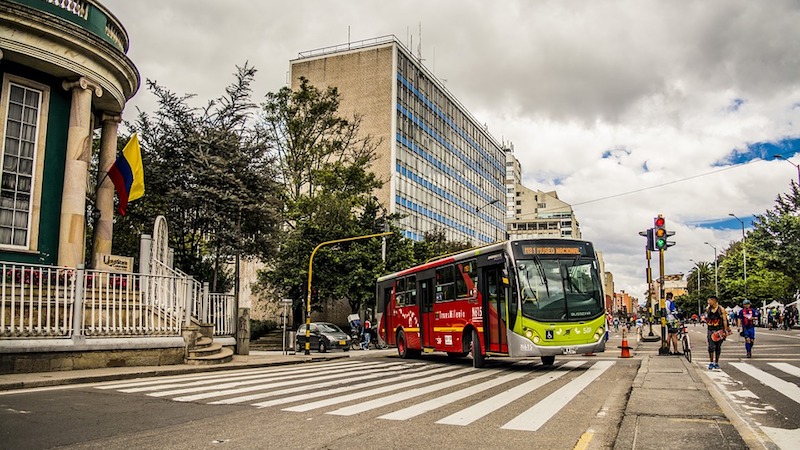Juan Pablo is a student of environmental law in Bogotá.
He is pleased with what has happened to his city since hybrid buses began replacing traditional buses. “Now you can see the mountains you could not see before because of the pollution!” he said.
The pollution was so thick it called into question the safety of the city’s residents, especially children, pregnant women, cyclists, or joggers. Today, a fleet of 337 hybrid buses, 180 of which are supported by CIF, transports 150,000 passengers each day, and collectively travels 17 million kilometers per year.
And this is just the start.
The hybrid buses represent an important step in the right direction, that of a lower carbon approach to transport – a response to a problem that can be solved and can no longer be avoided. Seeing the hybrid buses rushing through the busy avenues brings hope for a city that is among the most polluted in South America.
“I can tell the hybrid buses have contributed to the reduction of carbon dioxide emissions. I saw it every morning [a few years back] when the bus was starting, it released a black cloud of everything bad that is wrong with the world, and it was awful, you could just feel how smelling that was doing harm to your body.”
Hybrid buses will benefit the residents of Bogotá in more ways than one. In addition to improving health, they will attract additional green investments and strengthen sustainable transportation policies.
Juan Pablo is optimistic. “Hybrid buses contribute to bluer skies and cleaner air,” he says. “That makes me feel really good, hopeful for the future.”
By attracting other investors and influencing transportation policies, the introduction of hybrid buses will benefit the residents of Bogotá in ways other than improving their health.
And other initiatives, such as an increase in electric vehicles, make Juan Pablo optimistic. “I think it’s our responsibility to make a better future and it’s in our hands.”
This post is sponsored by Climate Investment Funds.
